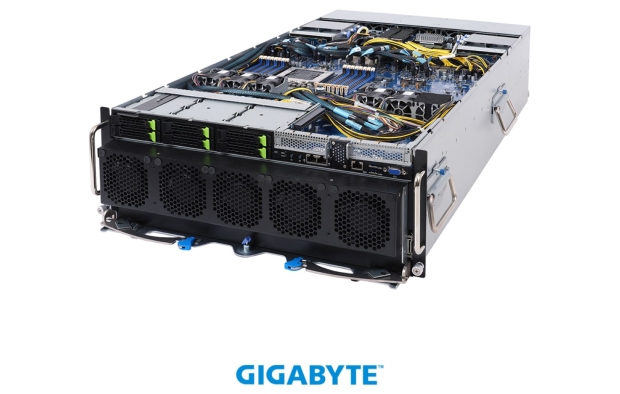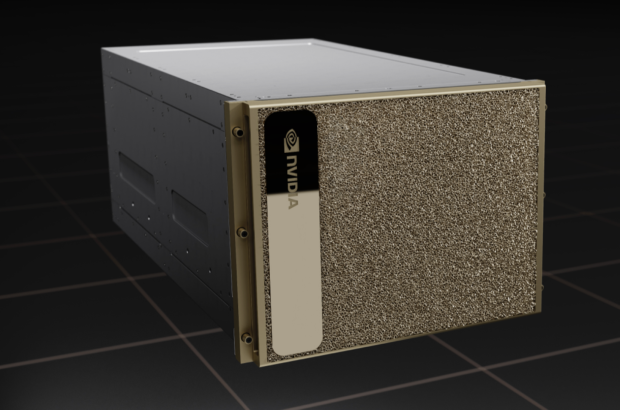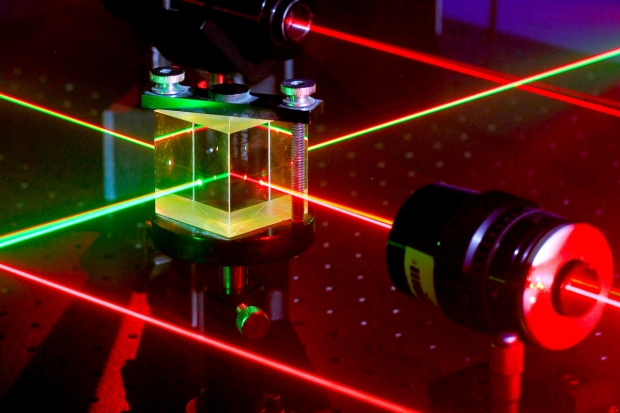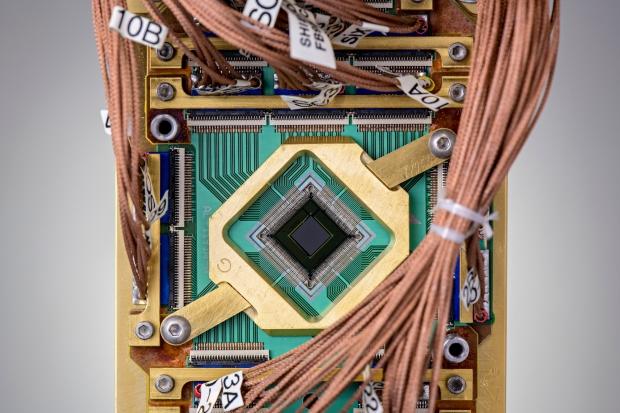IT/Datacenter & Super Computing - Page 3
The latest and most important IT/Datacenter & Super Computing news - Page 3.
NVIDIA Grace CPU-powered servers are coming from Taiwan tech giants
NVIDIA announced at Computex 2022 today in Taiwan that Taiwan's leading computer makers are preparing their first wave of systems powered by NVIDIA's new Grace CPU Superchip and Grace Hopper Superchip.
The likes of ASUS, Foxconn Industrial Internet, GIGABYTE, QCT, Supermicro, and Wiwynn will have NVIDIA Grace-powered systems in the first half of 2023. The upcoming servers are destined for the world of AI, high-performance computing (HPC), cloud gaming, digital twins, and so much more.
Ian Buck, vice president of Hyperscale and HPC at NVIDIA said: "A new type of data center is emerging-AI factories that process and refine mountains of data to produce intelligence-and NVIDIA is working closely with our Taiwan partners to build the systems that enable this transformation. These new systems from our partners, powered by our Grace Superchips, will bring the power of accelerated computing to new markets and industries globally".
Continue reading: NVIDIA Grace CPU-powered servers are coming from Taiwan tech giants (full post)
GIGABYTE G492-PD0: high-perf server with NVIDIA CPU + HGX A100 GPU
GIGABYTE has just announced its new "supercharged, scalable server" in the G492-PD0, which supports NVIDIA's new Ampere Altra Max or Altra processor.
The new GIGABYTE G492-PD0 not only packs NVIDIA's new Ampere Altra Max or Altra processor, but also NVIDIA HGX A100 Tensor Core GPUs for the highest performance in cloud infrastructure, HPC, AI, and more. Ampere's Altra Max CPU packs 128 Armv8.2 cores per socket with Arm's M1 core, with high performance efficiency and minimized total cost of ownership.
GIGABYTE is using a novel cooling solution that dedicates a cooling chamber for the NVIDIA accelerators and GPUs used in the networking expansion slots... something that allows for the highest possible airflow to cool the high-performance components.
Continue reading: GIGABYTE G492-PD0: high-perf server with NVIDIA CPU + HGX A100 GPU (full post)
NVIDIA announces new DGX H100 system: 8 x Hopper-based H100 GPUs
NVIDIA's new Hopper GPU architecture has been unveiled and with it comes some new DGX H100 systems powered by the monster new NVIDIA H100 GPU.
The new NVIDIA DGX H100 system has 8 x H100 GPUs per system, all connected as one gigantic insane GPU through 4th-Generation NVIDIA NVLink connectivity. This enables up to 32 petaflops at new FP8 precision, a gigantic 6x performance improvement over the previous-gen Ampere-based GPUs.
NVIDIA will be using the new Hopper-based DGX H100 systems as the "building blocks" of the next-gen NVIDIA DGX POD and NVIDIA DGX SuperPOD AI infrastructure platforms. NVIDIA's new DGX SuperPOD architecture has the new NVIDIA NVLink Switch System -- capable of up to 32 nodes and a total of 256 x H100 GPUs. At this level, we're talking about 1 exaflops of FP8 AI performance, also 6x more than its predecessor.
Continue reading: NVIDIA announces new DGX H100 system: 8 x Hopper-based H100 GPUs (full post)
TSMC announces N4X process tech, will be used for next-gen HPC chips
TSMC has just announced its N4X process technology, which has been tailor-made for the demanding workloads of high-performance computing (HPC) products.
The new N4X process technology is the first of TSMC's HPC-focused technology offerings, which the company says "representing ultimate performance and maximum clock frequencies in the 5-nanometer family. The "X" designation is reserved for TSMC technologies that are developed specifically for HPC products".
Taiwan Semiconductor Manufacturing Company (TSMC) enhanced its already impressive technology with features made for HPC products to create N4X, these features include:
Continue reading: TSMC announces N4X process tech, will be used for next-gen HPC chips (full post)
NREL Kestrel supercomputer: NVIDIA A100NEXT GPU, is this Hopper H100?
The National Renewable Energy Laboratory (NREL) has chosen Hewlett Packard Enterprise (HPE) to build its third-gen, high-performance computing (HPC) system, called Kestrel.
NREL's new Kestrel supercomputer was named after a falcon that has "keen eyesight and intelligence, Kestrel's moniker is apropos for its mission-to rapidly advance the U.S. Department of Energy's (DOE's) energy research and development (R&D) efforts to deliver transformative energy solutions to the entire United States".
The new supercomputer will be installed in the fall of 2022 at NREL's Energy Systems Integration Facility (ESIF) data center and will have a mind-boggling 44 petaflops of computing power. But the most interesting thing here is that NREL's new Kestrel supercomputer is powered by future next-gen Intel Xeon Scalable processors (Sapphire Rapids) and NVIDIA A100NEXT Tensor Core GPUs "to accelerate AI", not play Crysis.
Continue reading: NREL Kestrel supercomputer: NVIDIA A100NEXT GPU, is this Hopper H100? (full post)
AMD teleportation patent could be 'Zen moment' for quantum computing
AMD engineers have been working on something from the future it seems, with a new patent called "Look Ahead Teleportation for Reliable Computation in Multi-SIMD Quantum Processor".
The patent in question is for a system that would use quantum teleportation in order to boost a quantum computer's reliability, while at the same time reducing the number of qubits required for a given calculation. This "teleportation" technology would help solve scaling issues and calculation errors that arise from system instability.
One of the main issues behind quantum development is once you start pushing the pedal to the metal, there are major issues when it comes to scalability and stability. Quantum computing is far different to the 0s and 1s of traditional technology, so AMD's new teleportation patent is quite an important step towards solving that issue.
Continue reading: AMD teleportation patent could be 'Zen moment' for quantum computing (full post)
Australia's new 50 petaflop supercomputer: 200,000+ AMD EPYC CPU cores
Pawsey Supercomputing Centre down in Perth, Australia chose Hewlett Packard Enterprise (HPE) for its next-gen Setonix supercomputer, but now we have some more details on the specs inside of the new supercomputer.
Setonix will have over 200,000 AMD EPYC "Milan" CPU cores, over 750 AMD Mi-Next GPUs with 128GB of VRAM per GPU, over 548TB of system memory, near-node NVMe storage, 15PB ClusterStor Lustre filesystem with 2.7PB SSD and 90PB of Ceph storage.
The additional details on Pawsey's next-gen Setonix supercomputer were provided by Pawsey CTO Ugo Varetto.
Continue reading: Australia's new 50 petaflop supercomputer: 200,000+ AMD EPYC CPU cores (full post)
AMD's next-gen CPU and GPUs power LUMI supercomputer in 2021
Hewlett Packard Enterprise (HPE) have just unveiled its next-gen LUMI supercomputer, which is powered by AMD's next-gen Zen 3-based EPYC processors and Radeon Instinct GPUs.
The new LUMI supercomputer will find its new home in Kajaani, Finland in 2021 -- and will be using the HPE Cray EX architecture to spin up 550 Petaflops of peak horsepower. The new LUMI supercomputer will be a part of EuroHPC's GPU-accelerated supercomputing platform powered by next-gen AMD CPUs and GPUs.
Forrest Norrod, senior vice president and general manager, data center and embedded systems group, AMD explains:
Continue reading: AMD's next-gen CPU and GPUs power LUMI supercomputer in 2021 (full post)
D-Wave goes Down Under, Leap quantum cloud service now in Australia
D-Wave Systems Inc. has just announced that it has expanded its Leap quantum cloud service to two new markets: India and Australia.
This move is a big deal for both India and Australia as it means developers, researchers, and businesses in those countries get access to something quite incredible -- and something not available in their respective countries: access to D-Wave 2000Q quantum computers.
D-Wave Systems recently opened up their D-Wave 2000Q quantum computers over the same Leap quantum cloud service to researchers and scientists to help out in the COVID-19 pandemic. This news now unlocks India and Australia researchers access to use the quantum computers for their tasks.
Continue reading: D-Wave goes Down Under, Leap quantum cloud service now in Australia (full post)
ARM chips power world's fastest supercomputer: 7,299,072 CPU cores
ARM is in the news for all the right reasons today, where first Apple announced plans that it would be transitioning away from Intel -- where it has been a partner for its processors for many years now, to ARM. The second, is that ARM chips now power the world's fastest supercomputer -- and that supercomputer, is insanely fast.
The new RIKEN Center for Computational Science's Fugaku supercomputer packs Fujitsu's new 48-core A64FX system-on-a-chip. It has 158,976 of these 48-core processors, meaning there is a mind boggling 7,299,072 processor cores powering the Fugaku supercomputer. Yeah, 7.29 million CPU cores -- you read that right.
This means the new Fugaku supercomputer is 2.8 times more powerful than the previous #1 supercomputer; Oak Ridge National Lab's Summit supercomputer. Summit has 2,414,592 processor cores with 148 petaflops of computer performance, compared to Fugaku and its game-changing ARM chips pumping out 415 petaflops.
Continue reading: ARM chips power world's fastest supercomputer: 7,299,072 CPU cores (full post)











